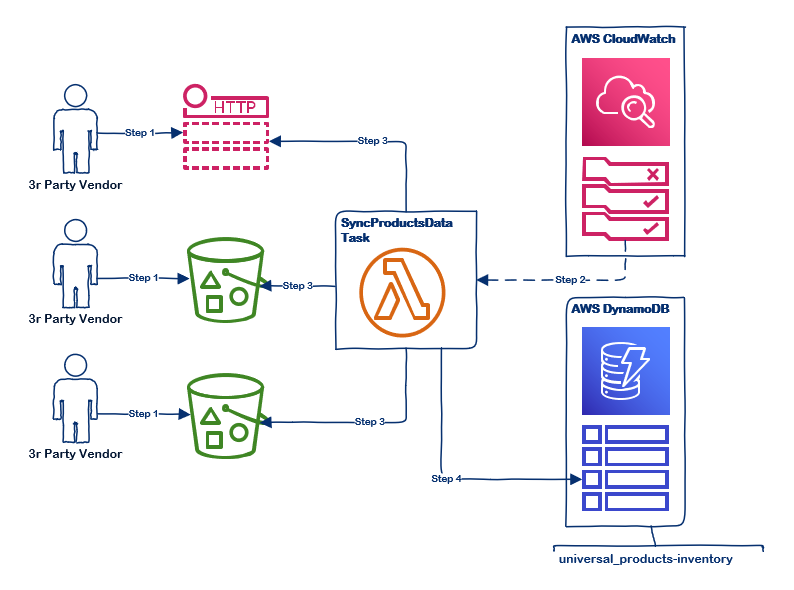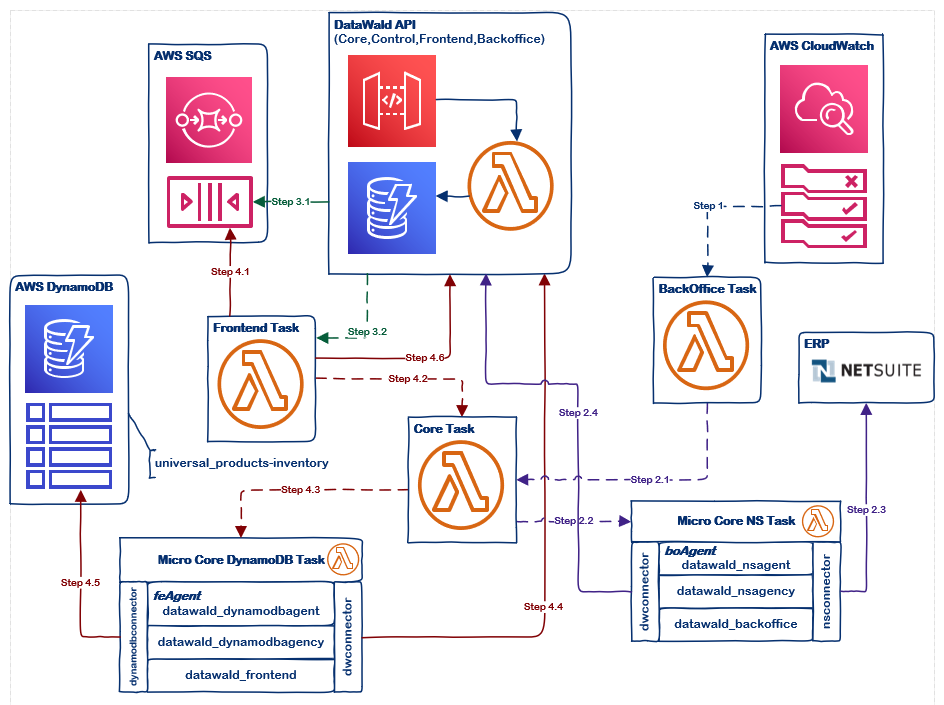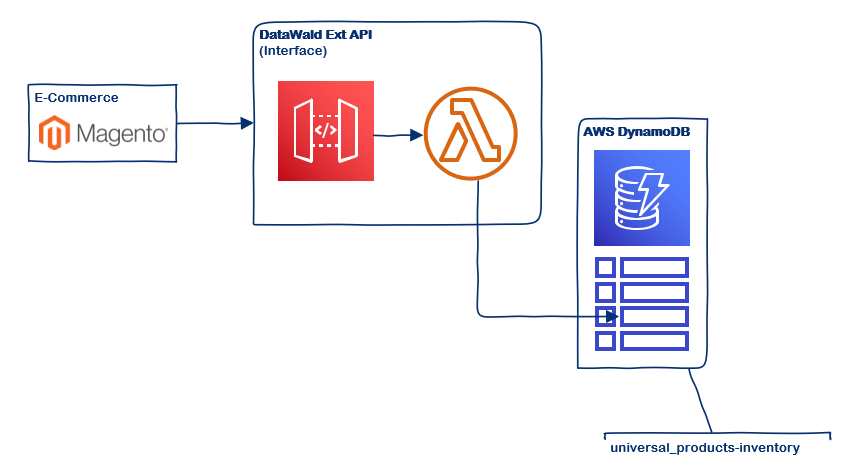Within the scenario, there are two types of the Inventory source(vendors and inhouse). Since products from vendors are imported as nonInventoryResaleItem into ERP(NetSuite), the Inventory of those products will be managed outside of the ERP(NetSuite). Then, the system will merge the sources of the inventory into one universal inventory data feed.
The source of inventory from vendors.
 Each vendor has to expose its inventory feed by a public link or push the data to a dedicated S3 bucket with the format(CSV, JSON or XML). Then, a scheduled task can fetch the data and push it to the table “universal_products-inventory”(AWS DynamoDB).
Each vendor has to expose its inventory feed by a public link or push the data to a dedicated S3 bucket with the format(CSV, JSON or XML). Then, a scheduled task can fetch the data and push it to the table “universal_products-inventory”(AWS DynamoDB).
The inventory of products managed by inhouse.
 The inventory of the items(inventoryItem) managed in ERP(NetSuite) will be synchronized by scheduled BackOffice Task with the cut time(lastQuantityAvailableChange) controlled by sync control layer. Then, the inventory data will be pushed to the table “universal_products-inventory”(AWS DynamoDB).
The inventory of the items(inventoryItem) managed in ERP(NetSuite) will be synchronized by scheduled BackOffice Task with the cut time(lastQuantityAvailableChange) controlled by sync control layer. Then, the inventory data will be pushed to the table “universal_products-inventory”(AWS DynamoDB).
E-Commerce inventory catchup.
 A scheduled job in the E-Commerce(Magento 2) will fetch data with the internal timeslot by the last updated date from the universal inventory feed to catchup stock level of the items.
A scheduled job in the E-Commerce(Magento 2) will fetch data with the internal timeslot by the last updated date from the universal inventory feed to catchup stock level of the items.